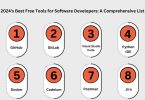Introduction:
Relational databases are the foundation of structured data management in the digital sphere, where information is king. By methodically organizing data into structured tables for simple access and analysis, they serve as digital filing cabinets. Together, we will dispel the myths surrounding relational databases and examine their elements, uses, and importance for data-driven decision making.
Understanding of relational database:
Knowing Relational Databases: Made up of tables with rows and columns, relational databases resemble digital spreadsheets. Every column contains particular details about that information, such as names or pricing, whereas each row represents a distinct piece of data, such as a client or a product. Relational databases are built on these tables, which make it easier to organize and retrieve data in a systematic way.
Important Elements and Their Functions:
Tables: Like folders in a file cabinet, tables are the fundamental units of relational databases. They combine comparable kinds of data together in categories so that the data is easily managed and properly arranged.
Relationships: Relational databases create links between various types of data, just as relationships do in real life to unite people. For example, companies can track purchases and examine customer behavior if they can link a client to their orders.
SQL Queries: Relational databases are written in Structured Query Language (SQL), which allows users to interact with data through queries. These queries improve data-driven decision-making by enabling users to obtain certain information, carry out calculations, and produce reports.
Transaction Processing: In a relational database, transaction processing guarantees the integrity and correctness of data modifications. Transaction processing guarantees that all processes are carried out consistently and effectively, whether it is updating client data or processing sales orders.
Why Relational Databases Matter:
Organized Data Management: Relational databases offer an organized framework for managing and organizing data, which helps firms keep things in order even when there is a lot of data.
Reliable Transactions: Relational databases use transaction processing to make sure that data changes happen smoothly, without mistakes or inconsistencies. This promotes reliability and trust in data-driven activities.
Flexibility and Accessibility: Regardless of a user’s level of technical proficiency, SQL queries make it simple for users to access and change data. This accessibility democratizes data analysis, enabling users to derive insightful information from data across businesses.
Commonly Used Tools: Relational databases are used in many different types of applications and industries nowadays. Well-known systems like IBM DB2, PostgreSQL, and MySQL are commonplace in corporate settings. They are essential tools for data management and decision-making due to their adaptability and dependability.
In summary, relational databases remain the cornerstones of structured data management in the ever-changing field of information technology. Relational databases enable businesses to fully utilize their data, fostering innovation and well-informed decision-making, thanks to their well-structured tables and robust query capabilities. Relational databases will continue to be essential partners in an organization’s pursuit of success and excellence as it navigates the challenges of data-driven operations.








